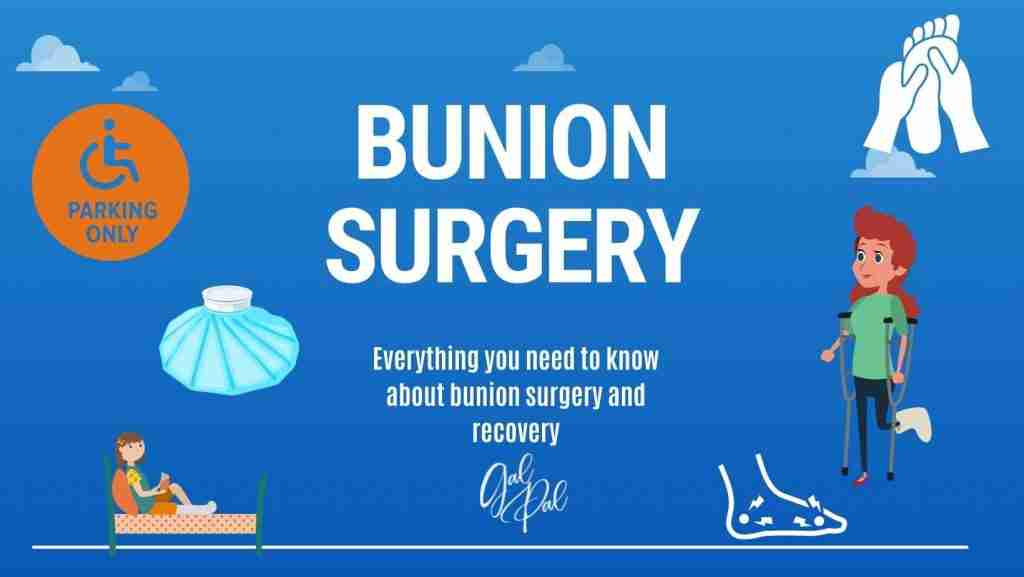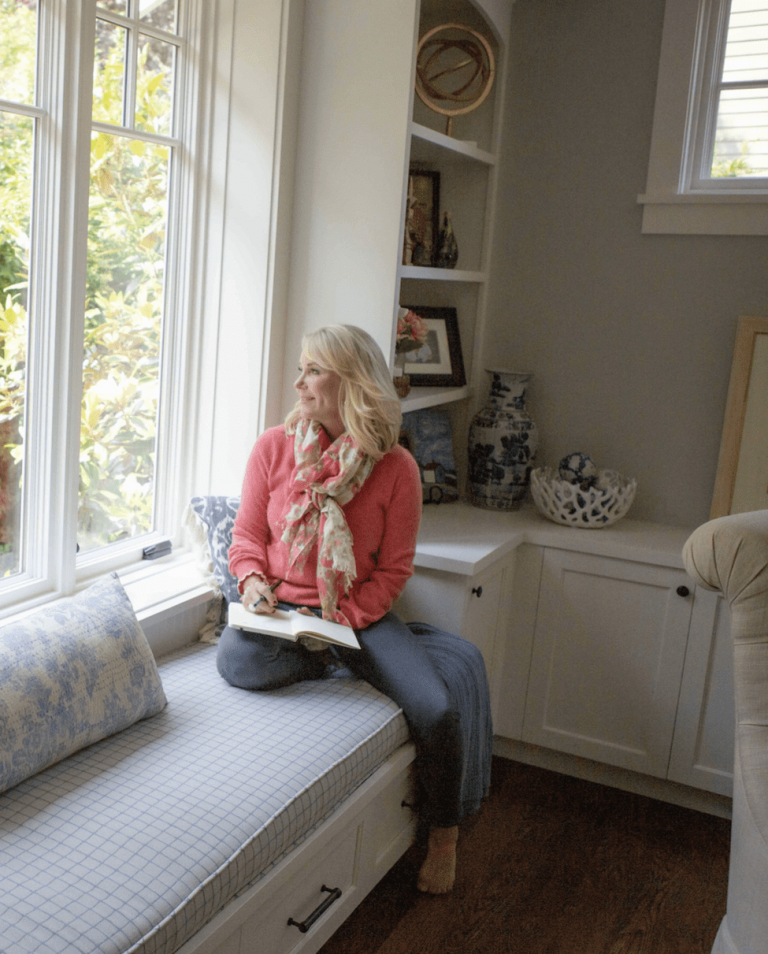Surprising bunion facts-surgery-causes-prevention
Do you have bunions? If you do, I am sorry, and I understand how annoying bunions can be. Did you know that around a quarter of the population has them? So, you are definitely not alone.
I had bunion surgery November 2021 so, I wanted to provide as much information as possible about bunions, what causes them and how to treat them.
Unfortunately I developed bunions on both of my feet. I started noticing the small bump starting to grow over twenty of years ago. As the size of the bony bump grew, so did the pain. I started wearing wide shoes and found myself wearing athletic shoes more often to avoid the pain. I finally pulled the trigger and booked an appointment for bunion removal surgery to correct the position of my toes.
Facts About Bunions That May Surprise You
1. The most common foot deformity in the world!
Bunions are a very common foot disorder, affecting about a third of adults in the United States. As you would imagine, the prevalence of bunions increases with age. They are more common in women than in men, likely because of differences in foot anatomy, footwear, and genetics.

2. Bunions Tend To Be Caused By Hereditary Defects
Bunions tend to run in families because they are most commonly caused by hereditary defects in the foot , resulting in a weak mechanical structure. I have also heard how you walk – your gait (genetically speaking) may be a cause as well.
About one in five people will develop a bunion (or bunions) in their lifetime, Jeffrey R. DeSantis, DPM, President of the American Podiatric Medical Association (APMA), tells Health—and because they’re so common, it’s important to know the signs to look out for, and what your options are if you suspect you have developed a bunion. Here’s what to know.
Many individuals have multiple family members who are also affected. The risk of developing bunions is greater for first degree relatives of affected individuals (such as siblings or children) as compared to the general public.
When bunions occur as part of a genetic syndrome, this feature follows the inheritance pattern of the syndrome.
3. Bunions Will Only Get Worse
If you have a bunion, they don’t go away. It is crucial to take action now and prevent chronic bunion pain in the future. The larger the bunion gets, the more painful it will be and the more difficulty you will have trying to find comfortable shoes that fit well.

4. Foot Injuries And Stress Can Lead To A Bunion
Foot injuries and stress on the foot can lead to a bunion. If individuals wear narrow shoes that squeeze their toes, the big toe is more likely to be pressed toward the second toe.
This squeezing causes an injury that, over time, leads to the development of a bunion. A bunion occurs when the first metatarsal bone found in the foot pushes outward, causing the big toe to point inward, which leads to a bump.
A bunion forms when the big toe pushes inward against the second toe; the joint on which the bunion forms is pushed outward, and the joint becomes bigger and sticks out. The skin over the bunion may become reddened and sore. Known in medical circles as hallux valgus or hallux abducto valgus, the development of bunions is a progressive disorder.
What Are The Symptoms of Bunions?
In addition to the bump on the joint at the base of the big toe, symptoms of bunions include:
- Soreness or pain
- Pins and needles or numbness
- A sensation of burning in the area of the bump
- Swelling (in addition to the bump itself) that may extend up into the toe or foot
- Reddened skin
- Restricted movement in the affected toe
- Corns and calluses may coexist with bunions
- The big toe may rub on the toe next to it

Do High Heel Shoes Contribute To Causing Bunions?
When the foot is placed in a downward position, significant pressure will be exerted on the plantar (bottom) portion of the forefoot. The pressure will increase in tandem with the height of the heel.
The increased pressure can also cause pain or foot deformities such as bunions and neuromas. The supination of the foot can also alter the alignment of the Achilles tendon and lead to a condition known as Haglund’s deformity (a bony enlargement of the heel).8
High heels will also cause the tendons and ligaments that support the arch to tighten. This can lead to pain in the arch of the foot, a condition called plantar fasciitis. Shoes with narrow toes can trigger a bunion, but they’re not the underlying cause.
High heels can exacerbate the problem because they tip the body’s weight forward, forcing the toes into the front of the shoe. This may help to explain why bunions are 10 times more common in women than in men.
Toe Box In Narrow Shoes
By wearing high heels, your toes will be forced into the toe box of the shoe by the sheer force of gravity. If the toe box in narrow, your toes will be pressed together, causing the inner and outer toes into an abnormal fixed position, known as hammertoe. Even the toe box is wider, the pressure against the toes and skin can lead to unsightly corns, calluses, and blisters.
What Factors Increase Your Risk Of Developing Bunions?
- High heels. Wearing high heels forces your toes into the front of your shoes, often crowding your toes.
- Ill-fitting shoes. People who wear shoes that are too tight, too narrow or too pointed are more likely to develop bunions.
- Rheumatoid arthritis. Having this inflammatory condition can make you more likely to develop bunions.
- Heredity. The tendency to develop bunions might be the result of an inherited problem with the structure or anatomy of your foot. Bunions run in families, because foot type (shape and structure) is hereditary, and some types are more prone to bunions than others. Low arches, flat feet, and loose joints and tendons all increase the risk.
Is surgery the only way to “fix” a bunion?
Technically, yes, though not all bunions require surgery! But if your bunion hurts or makes it difficult for you to walk, work, or wear shoes, you should make an appointment with specially foot and ankle surgeons to explore treatment options. Foot surgery is a big deal and you want to make sure that the foot surgeon is well trained and has performed many bunion removal surgeries.
Read more about the 15 facts for fast and easy bunion surgery recovery here.
The Benefits of Having the Bunion Surgical Procedure:
Our goal is for you to experience the following benefits after having bunion surgery:
- Corrected deformity
- Low chance of deformity returning
- Foot pain relief
- Pressure relief
- Toe alignment
- Ability to wear normal shoes after recovery
- Ability to return to normal activities without pain
- Improved balance and foot strength
Some people decide to go with minimally invasive bunion surgery as an alternative to traditional surgery that can reduce post-surgical scarring, swelling, pain and offers patients the easiest recovery.
What are the risks and possible complications of bunion surgery?
Anytime surgery is performed on a joint, there is a risk for stiffness and restriction of motions afterward. Scar tissue buildup inside the big toe joint is often the culprit. Infection is always a risk with any surgery.
Since bunion surgery involves cutting or fusing bones to achieve an improved alignment, bone healing must occur and some people may have poor bone healing. Bones typically take six weeks to three months to heal on average this is one of the risks of bunion surgery.
One reason I decided bunion surgery was a good idea was because I am in good health and the invasive surgery is easier to recover from was better now than later.
The final risk is the recurrence of the bunion. This may take a long time, but it is possible that the bunion may reoccur in some people.

Is there Such A Thing As minimally Invasive Bunion surgery?
The answer is no not really. There has been lots of talk about a new kind of surgery called Lapiplasty Bunion Correction.
What is Lapiplasty 3D Bunion Correction?
Lapiplasty® 3D Bunion Correction is an advanced surgical procedure that corrects a bunion by rotating the entire deviated bone back into its normal anatomical position. This is done using specially designed instrumentation, naturally straightening your toe and removing the “bump” and associated pain. Not all doctors perform this surgery and some don’t support this technique at all. As your healthcare provider about this new option.
Innovative plating technology is used to permanently secure the unstable joint and place it in the correct position. The good news is that most patients are able to walk within days of surgery. No cast is required; allowing patients to get back to the shoe wear of their choice and activities quickly.
The Lapiplasty® Procedure utilizes two low-profile, anatomically shaped titanium plates to permanently secure the unstable foundation of your corrected bunion instead of screws that traditional surgery. I have not had this type of procedure, so I can’t offer any suggestions. I will consider it for my other foot if I go in that direction next time.
The Advantages of Minimally Invasive Bunion Surgery:
- No general anesthesia (anesthesia that is similar to dentistry sedation – relaxed but not put to sleep) I can’t imagine this but I guess it is offered. This procedure is offered as an outpatient basis.
- Minimal scar tissue, less post-surgical pain, scarring and swelling and faster healing
- No damage to the tissues crossing the big toe joint, eliminating the complication of joint stiffness
- After surgery the foot is wrapped in a soft dressing; no cast & no crutches needed
- After surgery patients can walk right away, go back to work soon, drive a car, etc…Most patients transition to regular shoes by 6 weeks.
- Similar results we had before with traditional surgery but with far less pain
What Are The Non-Surgical Treatment For Painful Bunions?
Bunions don’t disappear on their own. They remain in place unless removed surgically. But by taking early action when you first notice the development of a bunion.
- Changes in footwear. Wearing the right kind of shoes that provide enough room for your foot is important. Choose shoes that have a wide toe box and avoid those with pointed toes or high heels, which cause the toes to crowd and may aggravate the condition. Some people find relief from wearing soft, pliable shoes, and arch supports, and from applying ice to the sore toe joint.
- Shoe Insoles. For prevention of bunions, the gentle orthotic shape of Superfeet inserts can help reduce excess motion, minimizing stress and strain on the big toe joint. To find the right Superfeet, start with your shoes. What type of shoes are you wearing? What you are doing in those shoes?
- Orthotics. Wearing orthotics can also help to reduce the possibility of damaging the joint.custom orthotics keep your feet in proper alignment, they help prevent further structural damage and provide relief from bunion pain at the same time they stop your bunions from getting worse.
- Padding. Pads or moleskin placed over the area of the bunion can minimize pain. These can be obtained from your surgeon or purchased at a drugstore.
- Activity modifications. Avoid activity that causes bunion pain, including standing for long period. A lot of standing will put pressure on the toe joints.
- Medications. Oral nonsteroidal anti-inflammatory drugs (NSAIDs), such as ibuprofen or aspirin, may be recommended to reduce pain and inflammation. Talk to your doctor about which pain reliever is best for you.
- Icing. Applying an ice pack several times a day helps reduce inflammation and pain. During periods of rest/icing, try to elevate your leg.
- Injection therapy. Although rarely used in bunion treatment, injections of corticosteroids may be useful in treating the inflamed bursa (fluid-filled sac located around a joint) sometimes seen with bunions.
- Prescription custom orthotics devices. In some cases, prescription custom orthotics devices may be provided by the foot and ankle surgeon.
- Toe Spacers. The separator is designed to provide noninvasive pain relief from bunions, or hallux valgus, and overlapping toes by gently realigning and straightening your big toe.
Pain can be managed in the early stages of bunion development, but will typically worsen until surgical correction can address the root cause. Conservative treatments are designed to help keep you comfortable, and include:
What to expect from Bunion Surgery?
Bunion surgery is a big deal. It’s an outpatient procedure and the type of anesthesia used will differ per doctor and the severity of the bunion. Some doctors use a spinal anesthesia and others may use a local anesthetic, general anaesthetic and a lighter anesthesia. Spinal anesthesia is also used. Check with your doctor to see what he uses at your initial consultation.
Surgery is usually scheduled as an outpatient or a same-day admission-type surgery. This means that you will come to the hospital on your day of surgery and either go home the same day or be admitted to the hospital.
Various types of bunions vary greatly. Some with much deformity when the toes start to cross over each other. The bony lump with vary as well. If you are a good candidate for bunion correction, the bunion recovery will vary as well.
What To Expect When Healing From Bunion Surgery:
- Week 1-2-You are in a cast to protect the foot. You will begin to notice less pain in your foot after two weeks. The cast can be very heavy so it makes it difficult to go up and down the stairs unless someone holds your foot up as you make the way down the stairs on you bottom.
- Week 3- Cast is removed and stitches are removed and foot is wrapped.
- Week 3- You start to wear the boot- you will not be able to put any weight on your foot at all. To move comfortably, you may need to use crutches, a scooter or a walker. Weight bearing will depend on what type of procedure is being done to correct your bunion.
- Week 6- You can finally put a little weight on your foot. You will start to walk on your heel. If you had surgery on your right foot, you can start driving if you can wear a normal shoe. It is not advised to drive if you have any pain in your right foot. Ask your doctor.
- After six to 12 weeks, you will start to regain foot function. Specific physical therapy exercises help restore your foot’s strength and range of motion. You can resume your activities after about three months. However, swelling may last for six to nine months after surgery.
Managing The Pain
The pain I experienced was brutal the first week, but improved over the next few weeks. The swelling had to be the worse part and you have to be diligent about keeping your foot raised for most of the day to avoid the pain of swelling for the first couple of weeks. Using extra pillows to elevate your foot in a chair or on your bed is essential.
Follow your doctor’s instructions for pain medication and follow up physical therapy appointments. The bunion surgery recovery and healing process will all depend on you and not pushing yourself too early doing your daily activities. Just expect that the recovery period will be long, so take it one week at a time.
You will have pain and swelling that slowly improves in the 6 weeks after surgery. You may have some minor pain and swelling that lasts as long as 6 months to a year. I am in my fourth month and still have swelling.
Surgical Boot To Protect Your Toe
After surgery, you will need to wear a cast or a special type of surgical boot to protect your toe and to keep it in the right position for at least 3 to 6 weeks. After some types of surgeries, a cast or special shoe is used for a few months.
Your doctor will remove your stitches or sutures about 2 weeks after the surgery. If you have removable pins holding your toe in place, they are usually removed in about 4 to 6 weeks.
If the surgery is on your right foot, then you will not be able to drive for six weeks. Long enough to where you can wear comfortable shoes driving as opposed to your walking boot.
It’s a long recovery process, no matter what people tell you. I am an active person and if I over do it, my foot feels tender in the morning even five months after surgery. The important thing is to carefully follow your doctor’s instructions.







